Abstract
This review was undertaken in recognition of the mounting public health and social problems associated with adolescent sexual behavior and the importance of basing school-affiliated programs designed to reduce sexual risk-taking behavior on sound research. The authors were commissioned by the Division of Adolescent and School Health within the Centers for Disease Control and Prevention, Public Health Service, to review carefully the research on these programs and to assess their impact on behavior. The authors identified 23 studies of school-based programs that were published in professional journals and measured program impact on behavior. They then summarized the results of those studies, identifying the distinguishing characteristics of effective programs, and citing important research questions to be addressed in the future. Not all sex and AIDS education programs had significant effects on adolescent sexual risk-taking behavior, but specific programs did delay the initiation of intercourse, reduce the frequency of intercourse, reduce the number of sexual partners, or increase the use of condoms or other contraceptives. These effective programs have the potential to reduce exposure to unintended pregnancy and sexually transmitted disease, including HIV infection. These programs should be replicated widely in U.S. schools. Additional research is needed to improve the effectiveness of programs and to clarify the most important characteristics of effective programs.
Full text
PDF


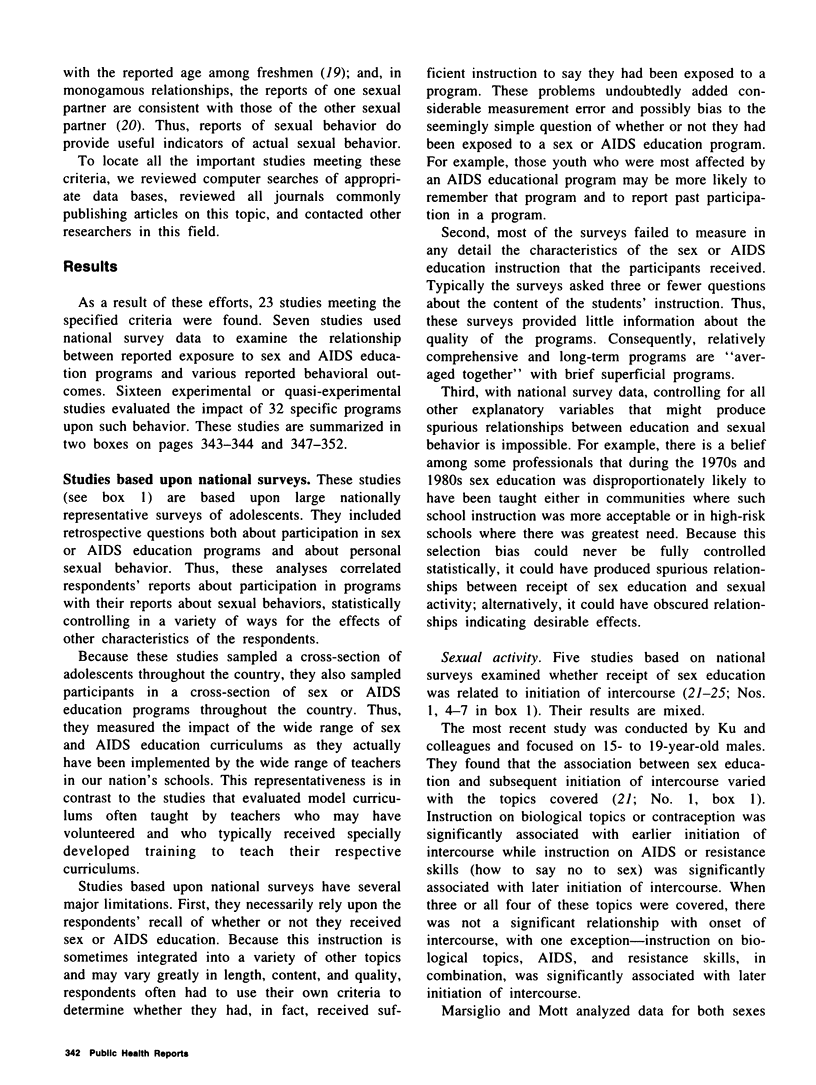

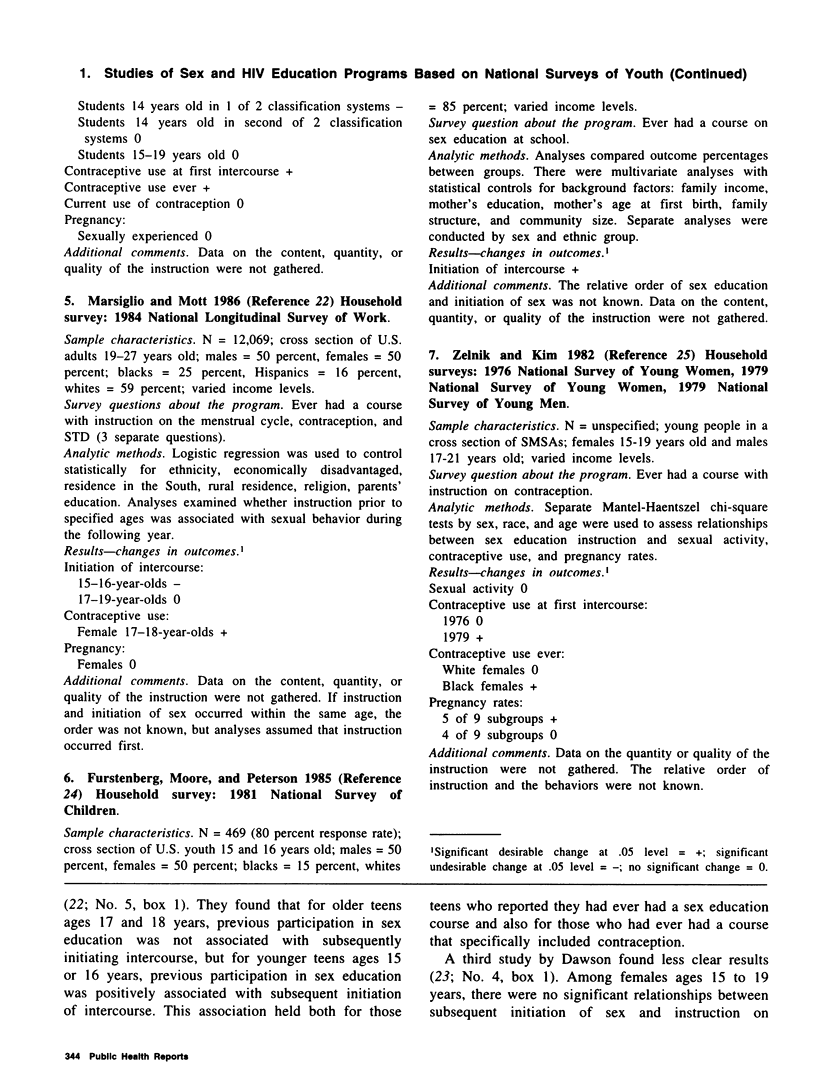

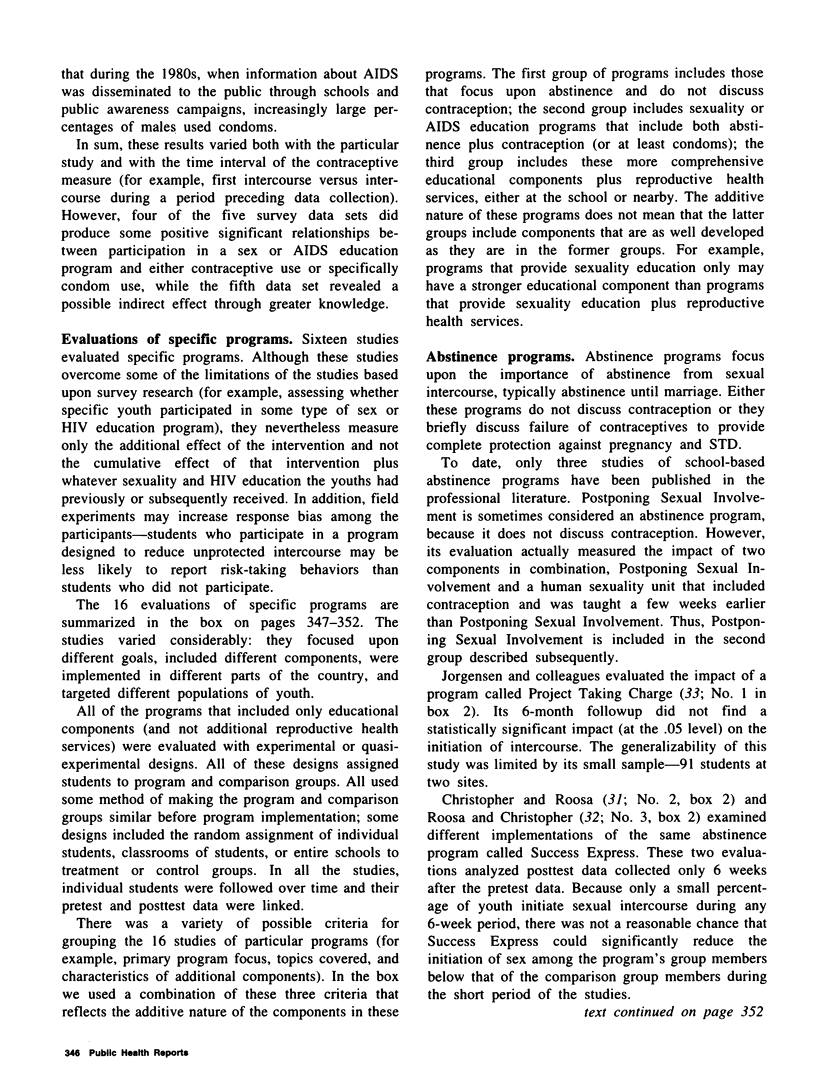
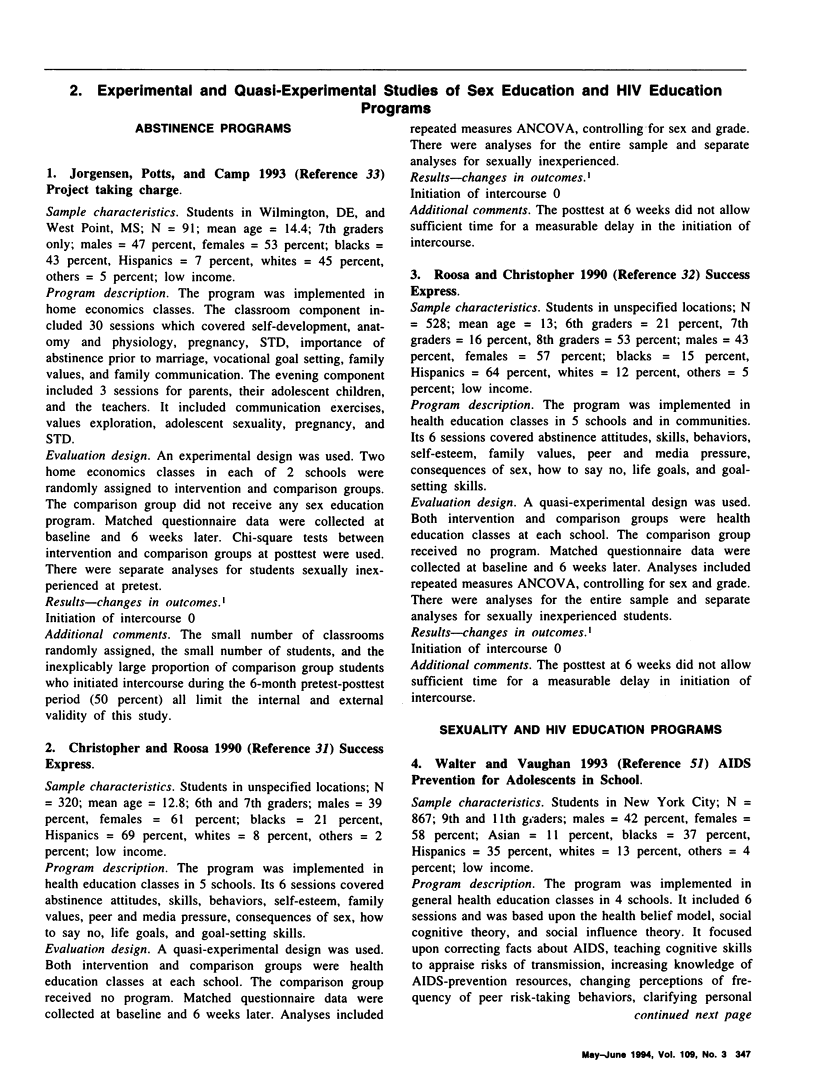


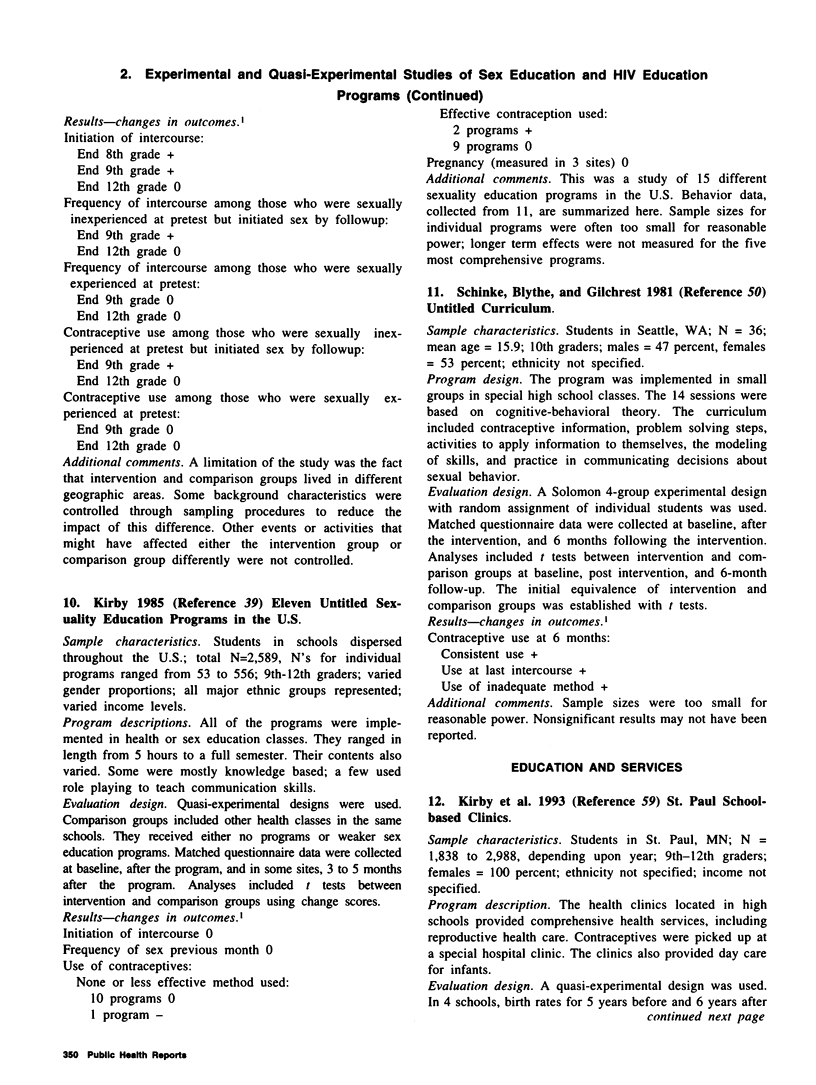

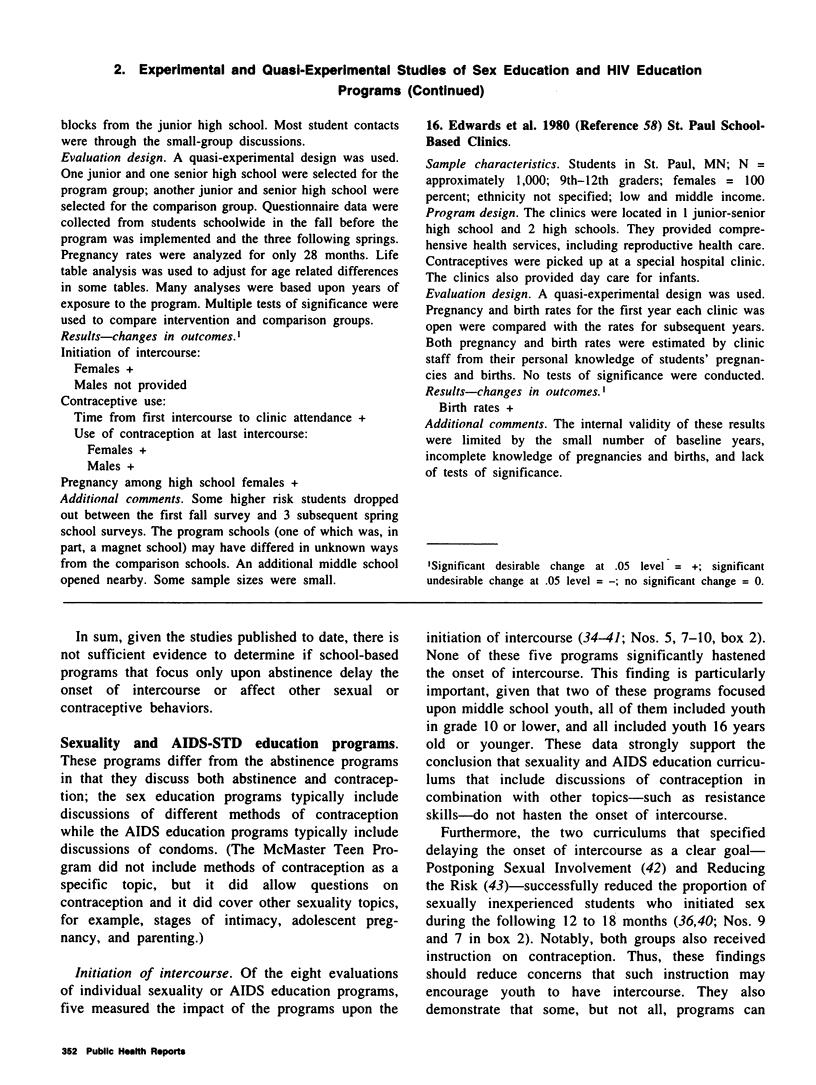
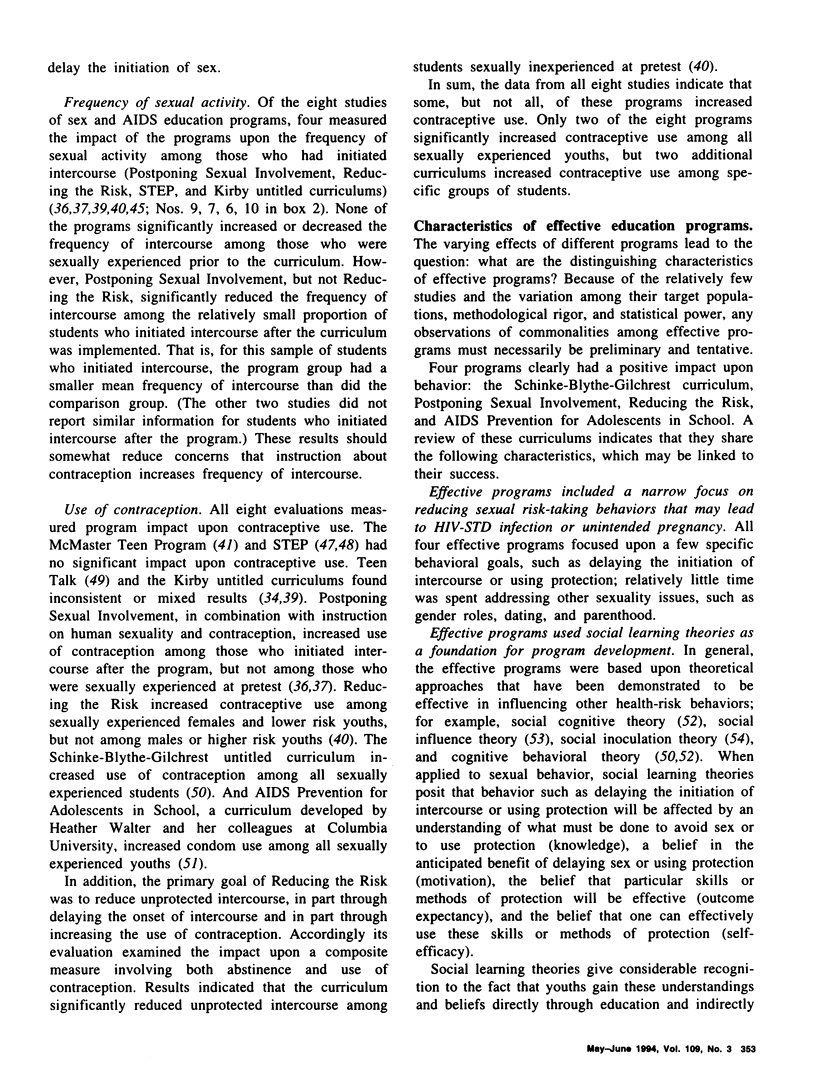



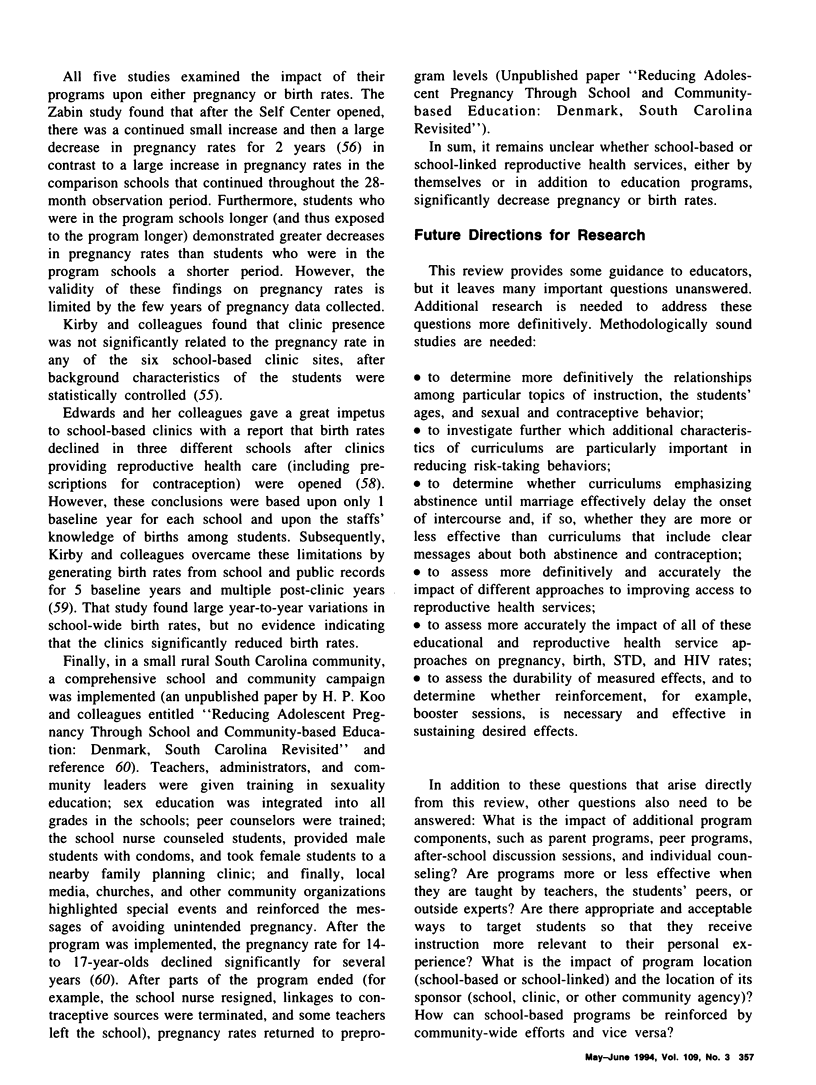

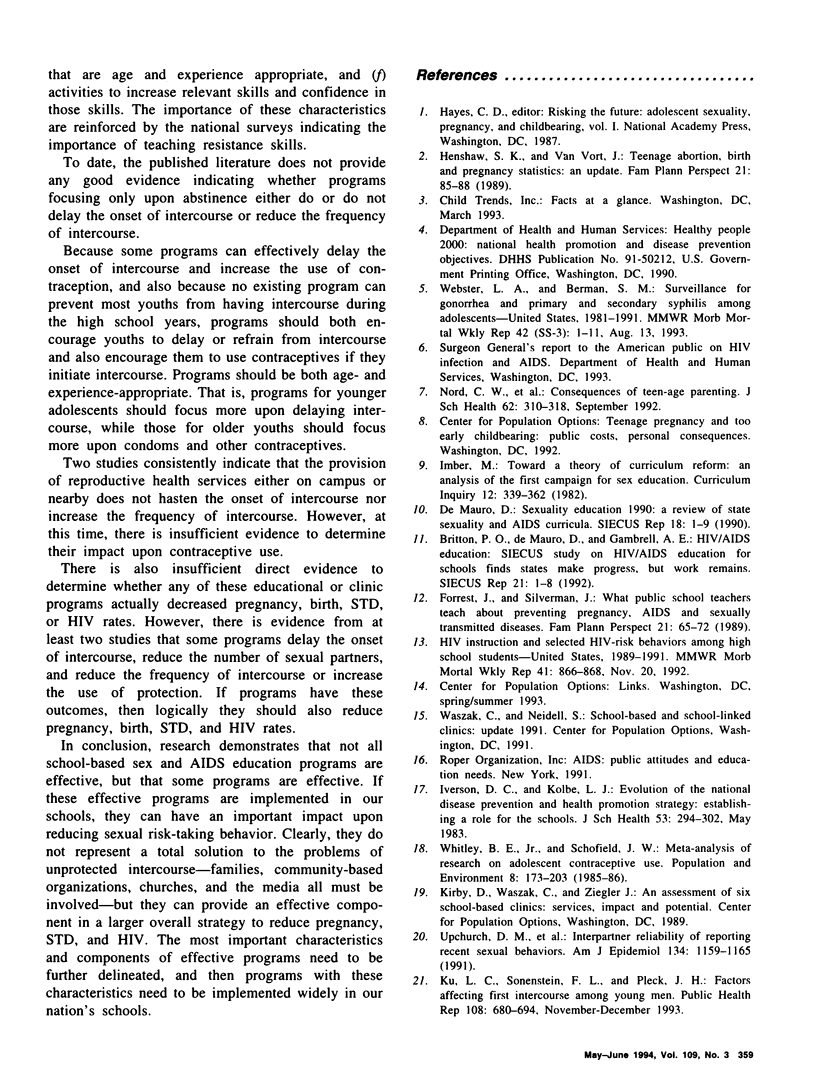
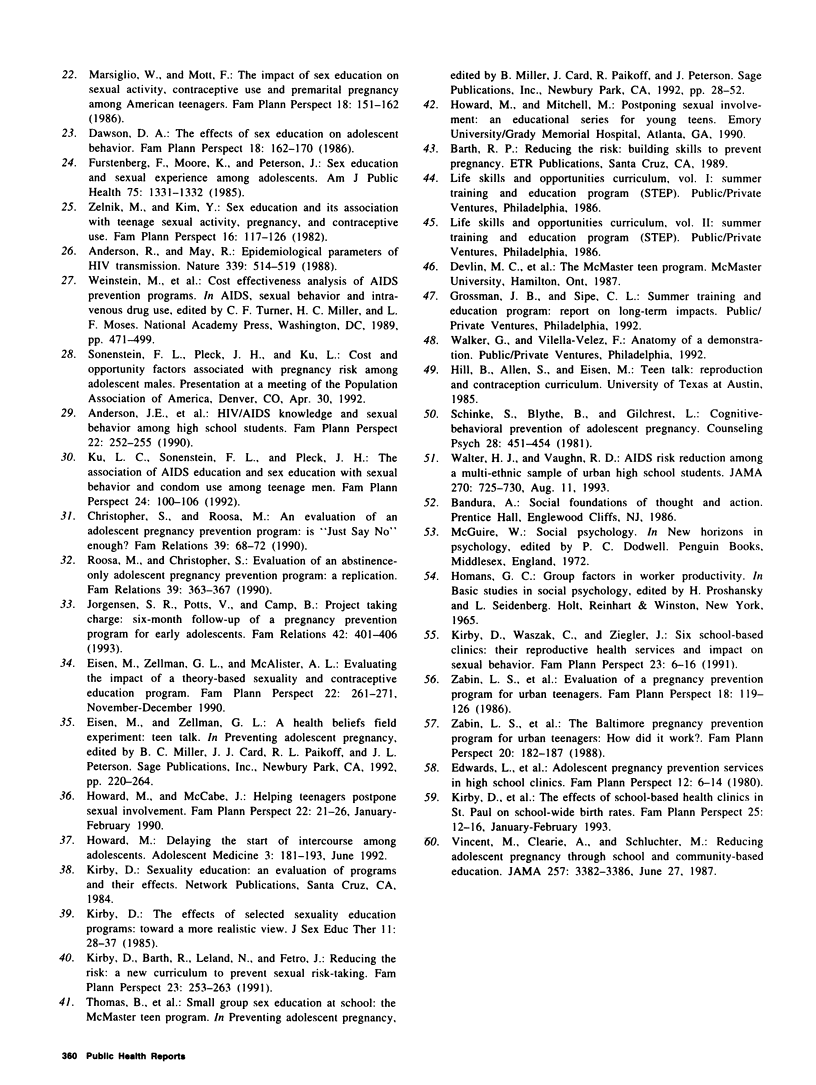
Selected References
These references are in PubMed. This may not be the complete list of references from this article.
- Anderson J. E., Kann L., Holtzman D., Arday S., Truman B., Kolbe L. HIV/AIDS knowledge and sexual behavior among high school students. Fam Plann Perspect. 1990 Nov-Dec;22(6):252–255. [PubMed] [Google Scholar]
- Anderson R. M., May R. M. Epidemiological parameters of HIV transmission. Nature. 1988 Jun 9;333(6173):514–519. doi: 10.1038/333514a0. [DOI] [PubMed] [Google Scholar]
- Dawson D. A. The effects of sex education on adolescent behavior. Fam Plann Perspect. 1986 Jul-Aug;18(4):162–170. [PubMed] [Google Scholar]
- De Mauro D. Sexuality education 1990. A review of state sexuality and AIDS education curricula. SIECUS Rep. 1990 Jan;18(2):1–9. [PubMed] [Google Scholar]
- Edwards L. E., Steinman M. E., Arnold K. A., Hakanson E. Y. Adolescent pregnancy prevention services in high school clinics. Fam Plann Perspect. 1980 Jan-Feb;12(1):6-7,11-4. [PubMed] [Google Scholar]
- Eisen M., Zellman G. L., McAlister A. L. Evaluating the impact of a theory-based sexuality and contraceptive education program. Fam Plann Perspect. 1990 Nov-Dec;22(6):261–271. [PubMed] [Google Scholar]
- Forrest J. D., Silverman J. What public school teachers teach about preventing pregnancy, AIDS and sexually transmitted diseases. Fam Plann Perspect. 1989 Mar-Apr;21(2):65–72. [PubMed] [Google Scholar]
- Furstenberg F. F., Jr, Moore K. A., Peterson J. L. Sex education and sexual experience among adolescents. Am J Public Health. 1985 Nov;75(11):1331–1332. doi: 10.2105/ajph.75.11.1331. [DOI] [PMC free article] [PubMed] [Google Scholar]
- Henshaw S. K., Van Vort J. Teenage abortion, birth and pregnancy statistics: an update. Fam Plann Perspect. 1989 Mar-Apr;21(2):85–88. [PubMed] [Google Scholar]
- Howard M., McCabe J. B. Helping teenagers postpone sexual involvement. Fam Plann Perspect. 1990 Jan-Feb;22(1):21–26. [PubMed] [Google Scholar]
- Howard M. Delaying the Start of Intercourse Among Adolescents. Adolesc Med. 1992 Jun;3(2):181–194. [PubMed] [Google Scholar]
- Iverson D. C., Kolbe L. J. Evolution of the national disease prevention and health promotion strategy: establishing a role for the schools. J Sch Health. 1983 May;53(5):294–302. doi: 10.1111/j.1746-1561.1983.tb05347.x. [DOI] [PubMed] [Google Scholar]
- Kirby D., Barth R. P., Leland N., Fetro J. V. Reducing the risk: impact of a new curriculum on sexual risk-taking. Fam Plann Perspect. 1991 Nov-Dec;23(6):253–263. [PubMed] [Google Scholar]
- Kirby D., Resnick M. D., Downes B., Kocher T., Gunderson P., Potthoff S., Zelterman D., Blum R. W. The effects of school-based health clinics in St. Paul on school-wide birthrates. Fam Plann Perspect. 1993 Jan-Feb;25(1):12–16. [PubMed] [Google Scholar]
- Kirby D., Waszak C., Ziegler J. Six school-based clinics: their reproductive health services and impact on sexual behavior. Fam Plann Perspect. 1991 Jan-Feb;23(1):6–16. [PubMed] [Google Scholar]
- Ku L. C., Sonenstein F. L., Pleck J. H. The association of AIDS education and sex education with sexual behavior and condom use among teenage men. Fam Plann Perspect. 1992 May-Jun;24(3):100–106. [PubMed] [Google Scholar]
- Ku L., Sonenstein F. L., Pleck J. H. Factors influencing first intercourse for teenage men. Public Health Rep. 1993 Nov-Dec;108(6):680–694. [PMC free article] [PubMed] [Google Scholar]
- Marsiglio W., Mott F. L. The impact of sex education on sexual activity, contraceptive use and premarital pregnancy among American teenagers. Fam Plann Perspect. 1986 Jul-Aug;18(4):151–162. [PubMed] [Google Scholar]
- Nord C. W., Moore K. A., Morrison D. R., Brown B., Myers D. E. Consequences of teen-age parenting. J Sch Health. 1992 Sep;62(7):310–318. doi: 10.1111/j.1746-1561.1992.tb01249.x. [DOI] [PubMed] [Google Scholar]
- Upchurch D. M., Weisman C. S., Shepherd M., Brookmeyer R., Fox R., Celentano D. D., Colletta L., Hook E. W., 3rd Interpartner reliability of reporting of recent sexual behaviors. Am J Epidemiol. 1991 Nov 15;134(10):1159–1166. doi: 10.1093/oxfordjournals.aje.a116019. [DOI] [PubMed] [Google Scholar]
- Vincent M. L., Clearie A. F., Schluchter M. D. Reducing adolescent pregnancy through school and community-based education. JAMA. 1987 Jun 26;257(24):3382–3386. [PubMed] [Google Scholar]
- Walter H. J., Vaughan R. D. AIDS risk reduction among a multiethnic sample of urban high school students. JAMA. 1993 Aug 11;270(6):725–730. [PubMed] [Google Scholar]
- Webster L. A., Berman S. M., Greenspan J. R. Surveillance for gonorrhea and primary and secondary syphilis among adolescents, United States--1981-1991. MMWR CDC Surveill Summ. 1993 Aug 13;42(3):1–11. [PubMed] [Google Scholar]
- Zabin L. S., Hirsch M. B., Smith E. A., Streett R., Hardy J. B. Evaluation of a pregnancy prevention program for urban teenagers. Fam Plann Perspect. 1986 May-Jun;18(3):119–126. [PubMed] [Google Scholar]
- Zabin L. S., Hirsch M. B., Streett R., Emerson M. R., Smith M., Hardy J. B., King T. M. The Baltimore pregnancy prevention program for urban teenagers. I. How did it work? Fam Plann Perspect. 1988 Jul-Aug;20(4):182–187. [PubMed] [Google Scholar]
- Zelnik M., Kim Y. J. Sex education and its association with teenage sexual activity, pregnancy and contraceptive use. Fam Plann Perspect. 1982 May-Jun;14(3):117–126. [PubMed] [Google Scholar]


